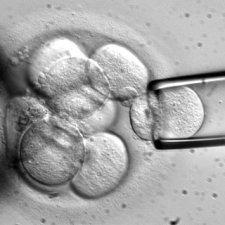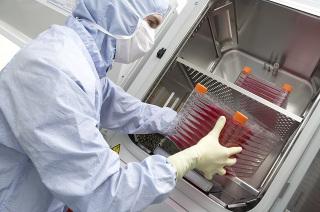Quick! Name one thing that you think of when hear about the year 1961! Now name one thing you think of when you hear about Ontario, Canada. If your first answer was “the discovery of stem cells” and your second answer was “James Till and Ernest McCulloch of the Ontario Cancer Institute” then we are on the right track. If those weren’t anywhere close to your answers, that is not a problem because, like most people, your everyday life does not revolve around the first discovery of stem cells. Life itself, though, does revolve around stem cells. They are how we all started out, and every cell in your body originated from a stem cell at some point during the embryonic development process. Unfortunately research on these astounding cells has caused its share of controversy over the last 50 years, and now with some huge discoveries on the horizon in the field, I thought we should take a moment and look at where it all came from: the stem cell of stem cell research, if you will.
It all started in Canada, as many great stories do. The previously mentioned duo from Ontario published interesting findings that they had identified a cell that could become any type of cell and any type of tissue. This was a big deal because in the 1960s scientists didn’t know a whole lot about the fine details of human embryonic development, and in a time of great discovery it seems only logical that something as big as men walking on the moon AND discovering the cellular basis of human life would happen in the same decade. Unfortunately, unlike space travel, research on stem cells centered around a need for human embryos and fetuses, because as far as we knew that was the only place a person could reliably find stem cells. Obviously this was a problem.
Debate and Controversy

Collection of stem cells from a fertilized embryo. This is done with very tiny instruments under high magnification.
It wasn’t until 1974 when the United States cut off all federal funding for fetal tissue research, but once that happened it basically left a lot of labs with no money. Scientists who had devoted their careers to the study of stem cells were suddenly out of work, and because it was such a hotly debated issue they knew it wasn’t going to be solved any time soon. In the wake of this decision, as well as a total moratorium placed on fetal stem cell research, many researchers left the country for places without such harsh restrictions. As far as America was concerned, stem cell research would not be happening here.
In the years that followed various committees were created and regulations were passed, but with each change in the political makeup of the country decisions flip-flopped and regulations changed constantly. It was a hostile environment that became highly polarized over the use of human fetuses (which is an understandable thing to get opinionated about in my book). What the world needed (and what President George W. Bush called for in a presidential address) was a non-embryonic and non-fetal source of stem cells, and in 2007 that dream became a reality.
The Breakthrough
Shinya Yamanaka from Kyoto Univeristy and James Thompson from the University of Wisconsin – Madison nearly simultaneously published research findings that proved the ability to create stem cells from adult skin tissue. They called them “induced Pluripotent Stem Cells” or iPS cells for short. This meant that now all you needed was a tissue sample from a person and you could make stem cells with their exact genetic makeup. All it took was a virus or two to shuttle some custom-made DNA into the cells to turn them from skin cells to iPS cells, ready to create any tissue in the body. This convenient loophole allowed researchers in the United States to receive funding from federal sources to keep working on development of stem cell technology. Although many researchers had left the country, some still saw the promise of a well-funded program here in the US and rushed to open labs on the backs of federal grants.
A Limitless Future

This guy is presumably carrying roughly a year’s worth of research right now. Pray he didn’t drop it right after this was taken.
The things scientists can do with stem cells today are astounding. Whole-organ engineering, custom body part production, creation of iPS cells from any cell of the body (including trace cells found in urine), really anything is possible. The ethics behind cloning and use of stem cells for creating entire people are still pretty hotly debated, but truthfully the future of stem cell research is bright compared to most fields of science. Because of the nature of these cells we can find infinite uses for them, and treatments using stem cells are already being used to treat a number of degenerative diseases. There is a lot of hope that they will be the miracle cure that is needed for diseases that currently have no viable remedy.
A lot of people still view stem cells in the context of the pre-2000 debates about bioethics, and right now that is the only thing holding the field back. If we can get over the idea that to use stem cells we need to have a constant supply of fetuses then maybe people will start to realize that this work is worth much more time and investment than previously realized. I guess I am promoting stem cell labs everywhere when I tell you, the reader, that the research done on stem cells has the ability to have a bigger effect on the medical world than organ transplants, blood transfusions, and vaccinations combined. (Admittedly, that is absolutely insane to say, but I will stick to my guns on this one. We will see if I am right in about 10 years.)
